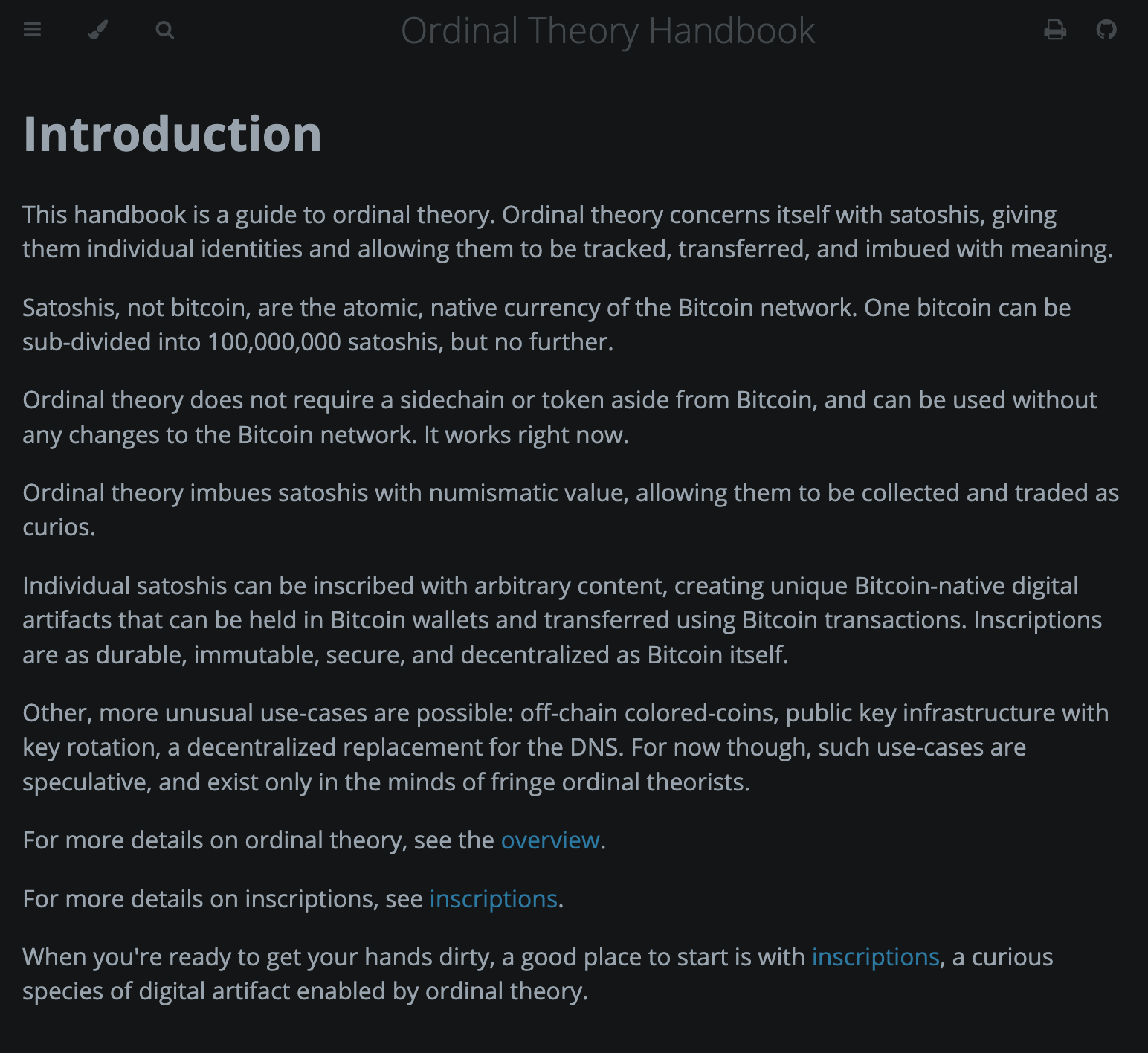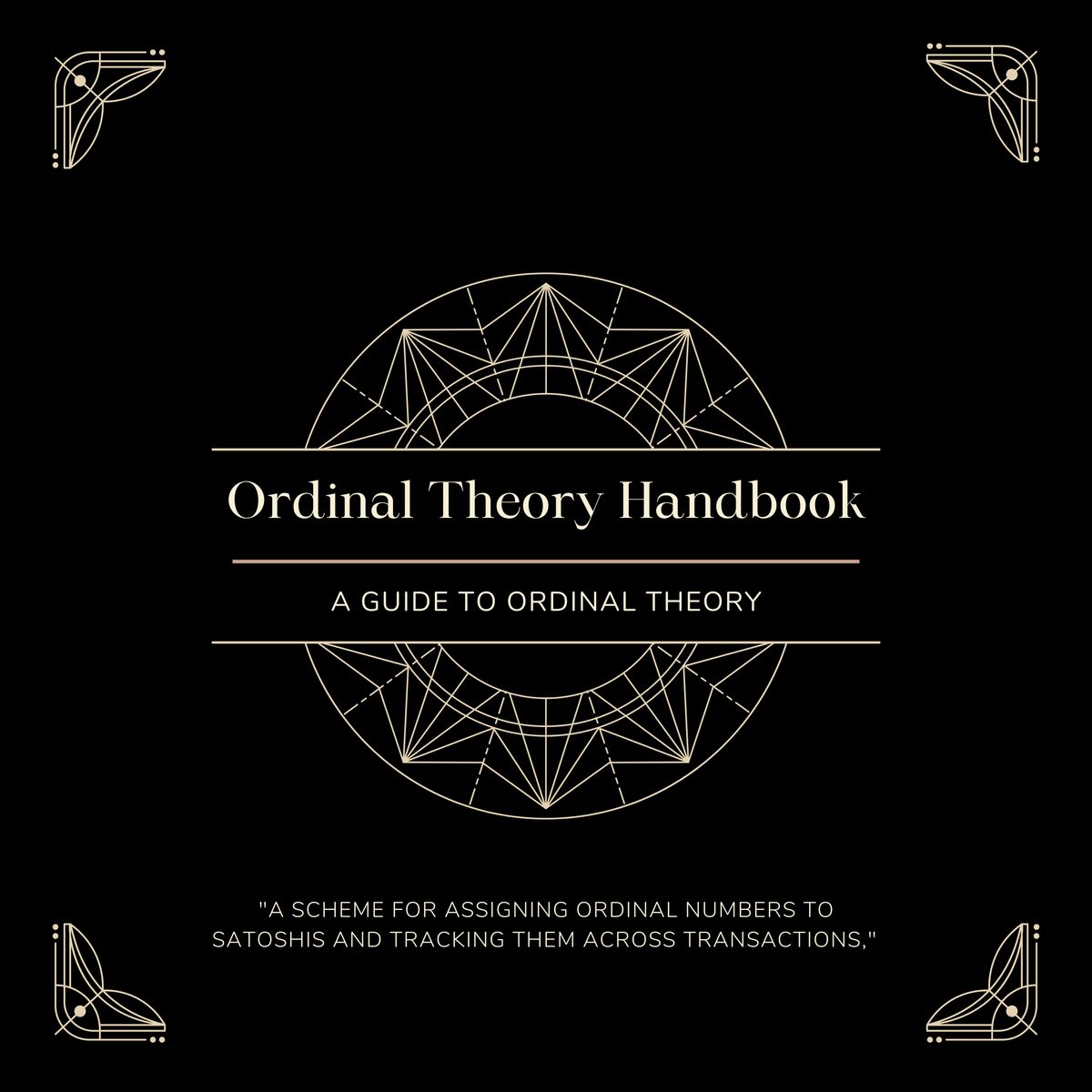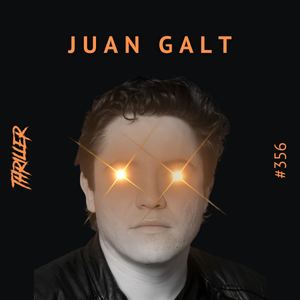The Ordinal Theory Handbook has been released, with 41 pages of pure Ordinal meaning. The ordinal theory does not require a separate token, another blockchain, or any changes to Bitcoin; it works now.

What are Ordinals?
Ordinals are a way to identify individual sats. Satoshis, not bitcoin, is the atomic, native currency of the Bitcoin network. One bitcoin can be subdivided into 100,000,000 satoshis, but no further. The potentials for Ordinals are immense, and one could make a decentralized DNS system around the ordinal specification. Other potential use cases are off-chain colored coins, public key infrastructure with key rotation, and arbitrary assets, such as NFTs, security tokens, accounts, or stablecoins can be attached to satoshis using ordinal numbers as stable identifiers. For now, many use cases are speculative and still have yet to be created.
The Ordinals spec is only 20 lines of python code.
# subsidy of block at given height
def subsidy(height):
return 50 * 100_000_000 >> height // 210_000
# first ordinal of subsidy of block at given height
def first_ordinal(height):
start = 0
for height in range(height):
start += subsidy(height)
return start
# assign ordinals in given block
def assign_ordinals(block):
first = first_ordinal(block.height)
last = first + subsidy(block.height)
coinbase_ordinals = list(range(first, last))
for transaction in block.transactions[1:]:
ordinals = []
for input in transaction.inputs:
ordinals.extend(input.ordinals)
for output in transaction.outputs:
output.ordinals = ordinals[:output.value]
del ordinals[:output.value]
coinbase_ordinals.extend(ordinals)
for output in block.transaction[0].outputs:
output.ordinals = coinbase_ordinals[:output.value]
del coinbase_ordinals[:output.value]
Does ordinal theory require a side chain, a separate token, or changes to Bitcoin?
Nope! Ordinal theory works right now, without a side chain, and the only token needed is bitcoin itself.
What is ordinal theory good for?
Collecting, trading, and scheming. Ordinal theory assigns identities to individual satoshis, allowing them to be individually tracked and traded, as curios and for numismatic value.
Ordinal theory also enables inscriptions, a protocol for attaching arbitrary content to individual satoshis, turning them into bitcoin-native digital artifacts.
Why are sat inscriptions called "digital artifacts" instead of "NFTs"?
An inscription is an NFT, but the term "digital artifact" is used instead, because it's simple, suggestive, and familiar.
The phrase "digital artifact" is highly suggestive, even to someone who has never heard the term before. In comparison, NFT is an acronym, and doesn't provide any indication of what it means if you haven't heard the term before.
Additionally, "NFT" feels like financial terminology, and the both word "fungible" and sense of the word "token" as used in "NFT" is uncommon outside of financial contexts.
For more details on ordinal theory, see the Ordinal Theory Handbook overview.
For more details on inscriptions, see Ordinal Theory Handbook inscriptions.
When you're ready to get your hands dirty, a good place to start is with inscriptions, a curious species of digital artifact enabled by ordinal theory.
Links
Videos
- Ordinal Theory Explained: Satoshi Serial Numbers and NFTs on Bitcoin
- Ordinals Workshop with Rodarmor
- Ordinal Art: Mint Your own NFTs on Bitcoin w/ @rodarmor








